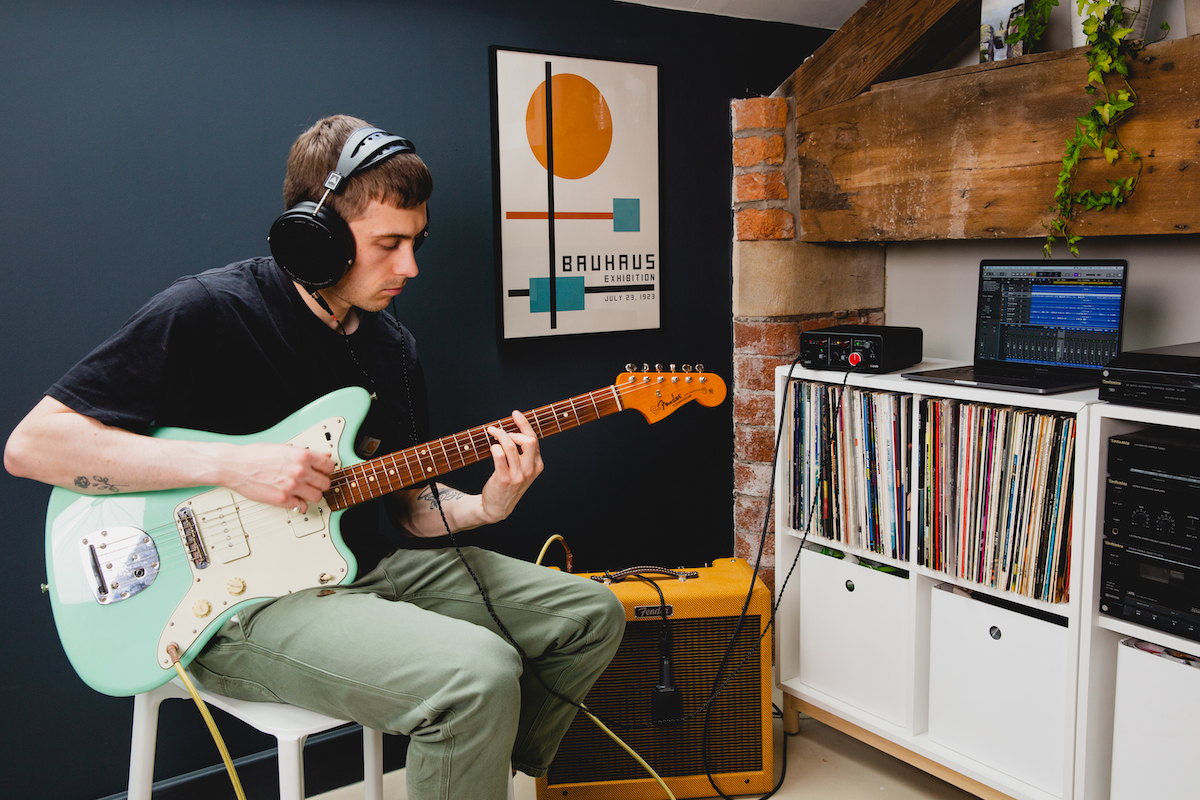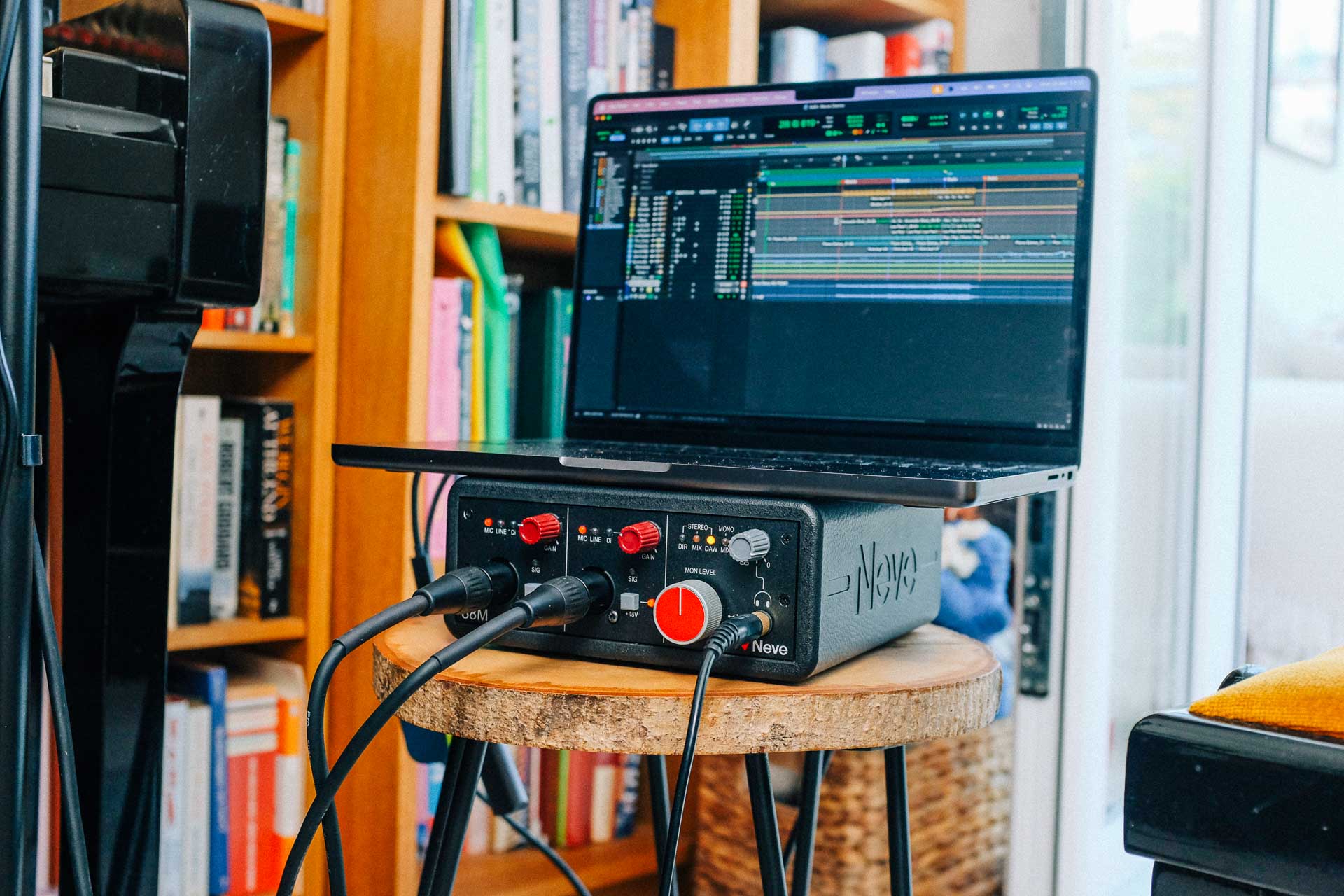Why Conversion Quality Matters In An Audio Interface
–
Audio interfaces have become the backbone of home and mobile recording, but while most engineers focus on preamp specifications, the real game-changer lies in conversion technology.
–

Bus-powered interfaces have revolutionised professional recording, enabling artists and engineers to capture sound anywhere: from home studios to concert halls, remote locations to artist bedrooms. High-end devices have now entered this space to provide premium, studio-quality portable sound. Portability has democratised high-end recording, but while most discussions focus on preamp quality, a crucial partner to the preamp is conversion technology. This often-overlooked circuit determines whether your portable setup delivers professional results.
The best preamps in the world cannot rescue poor conversion, yet this critical stage of the signal chain remains misunderstood. When professional engineers choose an interface, they are seeking conversion quality that maintains the sonic integrity inherently present in the analogue domain through to the digital audio workstation.
This is particularly important when using high-fidelity analogue equipment, microphones and preamps, for example. True translation must be afforded by the ADC chips if absolute professionalism is required.
The Foundation of Professional Portable Recording
Analogue-to-digital and digital-to-analogue conversion serves as the crucial gateway between the acoustic world and digital processing. Every signal entering your system passes through an ADC, while everything you monitor flows back through a DAC. This is not merely about capturing levels; it is about preserving the three-dimensional spatial information and harmonic complexity that separates professional and mediocre recordings.
Budget interfaces often compromise on converter chips to meet price points, using basic components that prioritise cost over performance. These may capture signal adequately but reveal their limitations when audio undergoes digital signal processing. As we heard in our recent video with recording engineer Tony Draper, superior conversion means “anything I track through Neve conversion, however you want to process it later, it will take it really well and do it naturally.”
Lesser converters develop a flat, compressed quality under manipulation, losing the spatial depth and harmonic richness that defines professional sound. The difference becomes particularly apparent in complex mixes where multiple elements compete for sonic space.
Engineering Excellence in Portable Form
Modern technologies such as the top-of-the-line ESS Sabre 32 chips that “are not commonly used on a lot of audio interfaces” due to their demanding specifications and higher costs, are premium components to choose when designing an ADC/DAC circuit. These converters deliver over 120dB of dynamic range, ultra-low distortion, and built-in jitter elimination. However, ADC/DAC chips are merely one part of the conversion circuit; the analogue input and output stages to and from these components must also be carefully considered to complement the I/O of the chips and allow for true translation at either side of the conversion equation.
The technical design capabilities honed over decades by our dedicated engineers translate into equipment that professionals describe as exceptional, producing three-dimensional imaging and natural sound character.
Our 88M and 1073SPX-D bring professional conversion technology to home and mobile studios.

The 88M and 1073SPX-D bring professional conversion technology to home and mobile studios.
Professional Validation
The proof lies in professional adoption. Tony Draper, with over a decade of experience on flagship Neve consoles, is spoilt for choice in his studio when it comes to AD/DA conversion and found the 1073SPX-D‘s conversion performance exceeded all of his high-end alternatives: “I did not expect it to be the very best I have got. Now it is my main mix conversion for hundreds of professional projects annually.”
This performance consistency extends beyond controlled studio environments. For engineers working across multiple facilities, this reliability is essential. As Tony notes: “I took the 88M to the Liverpool Philharmonic and recorded their Steinway Model D with it. The preamps and conversion in tandem give you such a deep soundstage.”
The investment in superior conversion pays dividends throughout the production chain. Whether capturing delicate acoustic performances or processing complex electronic arrangements, exceptional conversion preserves the sonic characteristics that distinguish professional work.
Tony describes the result: “It’s 3D all day long. The depth is absolutely amazing.” This three-dimensional quality allows instruments and voices to occupy distinct spatial positions rather than competing in a flat soundscape.
In an industry where technical standards continue rising, conversion technology represents the foundation upon which everything else builds. While preamps capture the initial sound and processors shape the final result, it is the converters that determine whether the essential musical information survives the journey from microphone to master. That’s why every Neve interface includes conversion technology that delivers the three-dimensional depth and natural character professionals demand.
Learn more about the 88M and 1073SPX-D.
Hear the 88M and SPX-D in action in our video with Tony Draper.
Interested in purchasing? Find your local dealer.